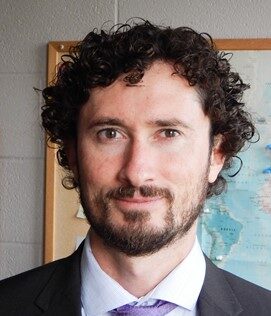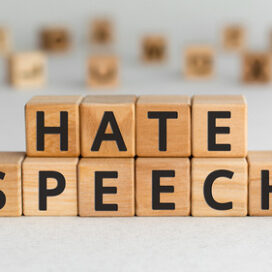New study offers improved strategy for social media communications during wildfires
Published: October 10, 2023 / Author: Shannon Roddel
In the last 20 years, disasters have claimed more than a million lives and caused nearly $3 trillion in economic losses worldwide, according to the United Nations.
Disaster relief organizations (DROs) mobilize critical resources to help impacted communities, and they use social media to distribute information rapidly and broadly. Many DROs post content via multiple accounts within a single platform to represent both national and local levels.
Specifically examining wildfires in collaboration with the Canadian Red Cross (CRC), new research from the University of Notre Dame contradicts existing crisis communication theory that recommends DROs speak with one voice during the entirety of wildfire response operations.

Alfonso Pedraza-Martinez
“Speak with One Voice? Examining Content Coordination and Social Media Engagement During Disasters” is forthcoming in Information Systems Research from Alfonso Pedraza-Martinez, the Greg and Patty Fox Collegiate Professor of IT, Analytics and Operations at the University of Notre Dame’s Mendoza College of Business.
Social media informs victims about wildfires, but it also connects volunteers, donors and other supporters. Accounts can send coordinated messages targeting the same audience (match) or different audiences (mismatch).
According to crisis communication theory, a disaster relief organization’s communication channels should speak with one voice through multiple accounts targeting the same audience, but the team’s study recommends a more nuanced approach.
“We find the national and local levels should match audiences during the early wildfire response when uncertainty is very high, but they should mismatch audiences during recovery while the situation is still critical but uncertainty has decreased,” said Pedraza-Martinez, who specializes in humanitarian operations and disaster management. “We find that user engagement increases when the national headquarters lead the production of content and the local accounts follow either by tweeting to a matching or mismatching audience, depending on timing in the operation.”
The study reveals that engagement improves by 4.3 percent from a match only during the uncertain and urgent response phase, while a divergence of content creation decisions, or mismatch, yields 29.6 percent more engagement when uncertainty subsides during the recovery phase.
It’s been two months since the deadly fires in Maui, yet recovery efforts remain ongoing even as media coverage of the disaster has tapered off. Pedraza-Martinez said social media can fill that void, especially if handled the right way.
“In the current recovery phase, state and local social media accounts should target different audiences including donors and victims, as opposed to addressing the same audience simultaneously,” he said.
In collaboration with the CRC, the research team collected Twitter data on the 2016 Fort McMurray wildfire in Alberta, Canada. They analyzed 934 tweets from the headquarters account, which received 33,861 retweets and 34,722 likes. They also looked at 629 tweets from the Alberta account, which received 4,802 retweets and 2,862 likes.
Measuring engagement as the total number of likes, retweets, clicks and replies, the team used text analysis to identify the audience (victims or supporters) and then analyzed how audience match between accounts affected user engagement.
An example of a CRC tweet directed to victims could state, “For those who missed it last night, online registration is open. Evacuees please register here.” The study suggests that likes and replies to this tweet could have led to more disaster victims seeing the message and registering to receive help.
A CRC tweet directed to supporters may request, “Donate here to help those affected by the fires in Fort Murray,” which may have resulted in more donor aid.
The findings also apply to other types of disasters as long as social media is widely used by the public and the relief organization has national and local social media accounts used to communicate with the public. Most natural disasters fall into this category, and most of the 192 National Societies of the Red Cross and Red Crescent do as well.
“This paper would not have been possible without the collaboration of the Canadian Red Cross,” Pedraza-Martinez said. “We are grateful for their willingness to take part in our research.”
Co-authors of the study include Changseung Yoo from McGill University and Eunae Yoo and Lu (Lucy) Yan from Indiana University.
Related Stories




